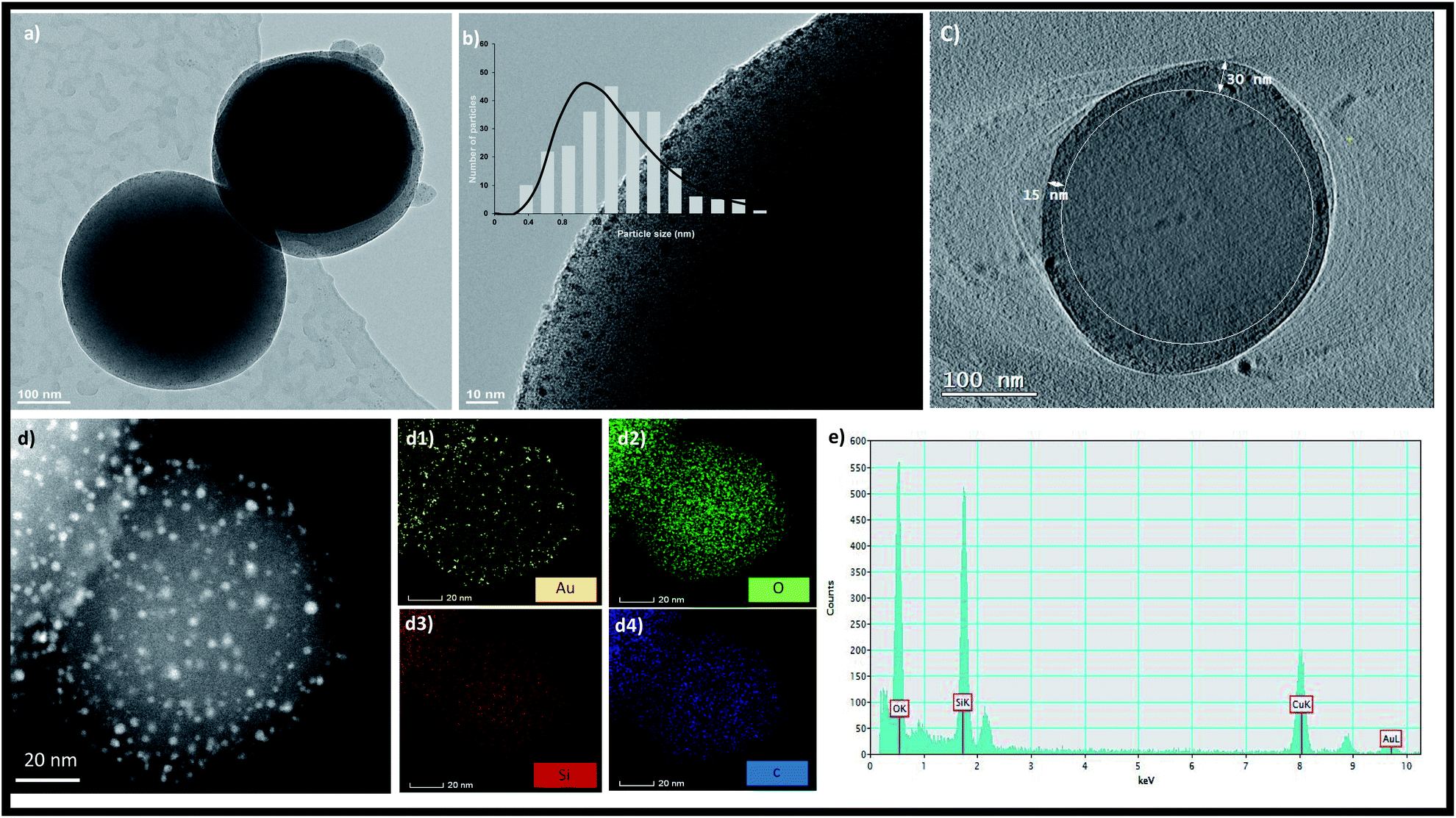

We present a novel approach to produce gold nanoclusters (Au NCs) in the pores of mesoporous silica nanoparticles (MSNs) by sequential and controlled addition of metal ions and reducing agents. This impregnation technique was followed to confine Au NCs inside the pores of MSNs without adding external ligands or stabilizing agents. TEM images show a uniform distribution of monodisperse NCs with an average size of 1.37 ± 0.4 nm. Since the NCs are grown in situ in MSN pores, additional support and high temperature calcination are not required to use them as catalysts. The use of Au NC/MSNs as a catalyst for the epoxidation of styrene in the presence of tert-butyl hydroperoxide (TBHP) as a terminal oxidant resulted in an 88% conversion of styrene in 12 h with a 74% selectivity towards styrene epoxide. Our observations suggest that this remarkable catalytic performance is due to the small size of Au NCs and the strong interaction between gold and the MSNs. This catalytic conversion is environmentally friendly as it is solvent free. We believe our synthetic approach can be extended to other metal NCs offering a wide range of applications.
